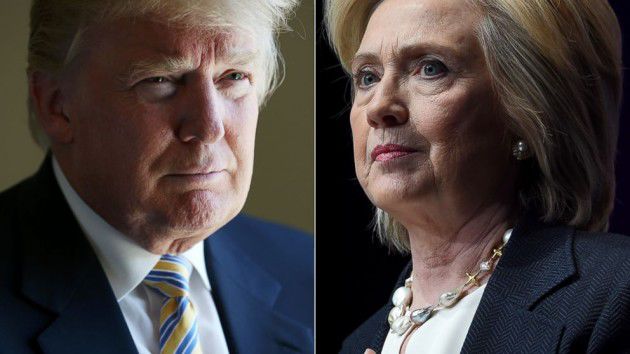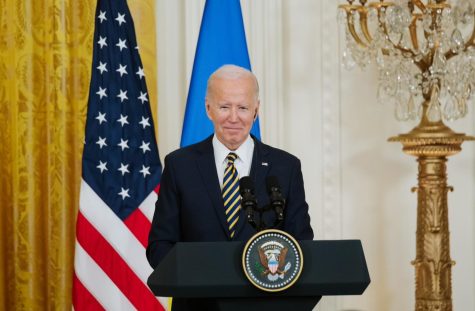VSB weighs in on economic policy proposal
November 1, 2016
With the optics of this year’s election, it is easy to forget that there are real issues at stake this November. Instead of focusing on scandals (which is decidedly easier to do at the moment), perhaps we should evaluate each candidate from an economic perspective. After all, the way our nation conducts business and collects revenue could potentially have a great influence over future taxpayers at this University.
Candidates are not always clear about policy proposals, and discussion of policy this election cycle has been extremely limited. Professors in the School of Business weighed in on the candidates’ respective economic policies and prioritized the proposals most salient elements.
It takes only one debate to realize that taxes are a major issue in this election, as frustrated conservatives like Donald Trump lament Obama’s upper-class income tax, the loss of jobs overseas, “slow” economic growth (the most recent 2016 third quarter GDP growth was announced as 2.9%, a rate which is more than double the previous quarter). It is therefore unsurprising that Mr. Trump has opted for a Regan-era approach to taxation.
If Trump were elected he will cut taxes for everyone, reduce the number of tax brackets, and slash the “top rate” tax to help high-income taxpayers. Under Trump’s plan, high-income taxpayers (those earning over $154,000) would pay 33% tax instead of the 39.6% rate currently in place.
According to VSB Professor Dave Fiorenza, this method of taxation did work for Ronald Reagan. However, VSB Professor Fredrick Young reminds us that this policy would generate less tax revenue and therefore “would result in a significantly larger federal government deficit and an even more massive debt burden.”
Trump would also do away with the “death tax” which currently imposes hefty taxes on individuals/assets worth more than $5.45 million, and would slash the corporate tax rate from 35% to 15%.
Secretary Clinton, on the other hand, proposes an entirely new bracket so that the highest-income earners, those earning $5,000,000 or more, would face a 43.6% rate. Clinton proposed that the tax revenue generated by her plan would be allocated towards certain programs like free college education for people from low/middle income backgrounds.
Her plan would also make corporate inversions increasingly difficult. Young reminds us that while her plan would result in a “modest” expansion of the government’s budget deficit (which is currently $590.3 billion), it would leave the debt-to-GDP ratio “essentially unchanged.” Clinton’s plan is expected to increase the debt to 86% from a current 77% debt-to-GDP ratio and the Congressional Budget Office estimates that the debt-to-GDP ratio would rise to 85% at current levels. By contrast, Trumps, $5.3 trillion in tax cuts would bring the debt to over 105% of GDP, meaning that it would be larger than the country’s total economic production.
However, despite these transparencies in tax proposals, Fiorenza still sees much weakness in the each of their comprehensive policies. “Neither plan contains all the intricate details that would give better analysis to how the end results of the economy would be after implementation. There are so many other factors affecting the economy besides taxes, such as The Federal Reserve, state and local municipal budgets, international trade with other countries and their economies.”
On the subject of trade, the candidates have both openly opposed the Trans-Pacific Partnership (TTP), a trade agreement initiated by the Obama administration, which allows the U.S. to engage in tariff-free trade with 12 countries, including key trading partners.
While Clinton helped promoted the deal as Secretary of State and even praised it as “the gold standard in trade agreements,” she now voices opposition citing details like currency manipulation (the act of selling foreign currency in exchange for domestic currency to manipulate exchange rates). Trump opposes the deal for the same reason. He told Breitbart News that currency manipulation is “the number one weapon used by foreign countries to hurt the United States and take away jobs.”
Trump also plans to levy 45% tariffs on Chinese imports and 35% tariffs on Mexican imports. Though Trump believes that this will protect American jobs, Young warns that “tariffs of that magnitude would inevitably spark retaliation against U.S. imports and trigger high inflation as consumers would have to pay significantly more for consumer goods from those two countries.”
On the subject of job creation, each candidate believes that they have the potential to “create” U.S. jobs. However, Fiorenza points to the fact that the federal government does not, in fact, create any jobs at all.
“The goal of each candidate is slightly different on how they create jobs,” Fiorenza said. “Both do not understand that the Federal Government does not create jobs; supply and demand creates jobs. Government can and has instituted plans to assist in job creation through tax abatements, tax credits or lower regulation.”
Trump promises to create more jobs by incentivizing businesses to hire. He will do so by removing tough regulations, lowering the corporate tax, attempting to lower our trade deficit, and withdrawing from N.A.F.T.A. His focus will be largely on the manufacturing sector, which has declined steadily with the advent of new technology.
However, Young reminds us that most “consumer goods impacted [by the loss of manufacturing jobs] are no longer manufactured in the U.S., so ultimately the US would purchase these goods from other countries.”
Clinton plans to allocate taxpayer money, generated in large part by top tax payers, to increase jobs training. She will also invest federal funds in struggling sectors.
Young summarizes the importance of all of these issues, reminding us that “it is important to view [political proposals] through the lens of what has been an inexplicably bizarre campaign. Perversely, economics, which should be the most critical issue of the presidential campaign, an issue that also should be the foremost focus of every voter, has been supplanted by sleaze and scandals when at the heart of the matter, as James Carville put it so succinctly, ‘It’s the economy, stupid.’”













